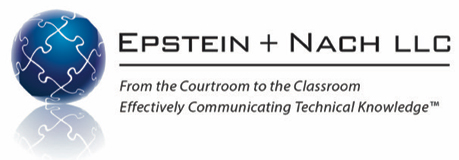With Attention to Talent, Training and Tools, Audit Committee Appointments Might Prove More Attractive
It has become commonplace to decry the dearth of talented individuals willing to serve on corporate board audit committees and to speculate on the need to make such appointments more attractive to the right mix of financially literate individuals. For various valid reasons, including litigation risk and the complex and still-expanding body of knowledge that must be mastered to effectively oversee the financial reporting and annual audit functions, many boards are scrambling to find qualified candidates for such assignments. As SEC Chair Mary Jo White recently noted, “Just meeting the technical requirements of financial literacy may not be enough to fully understand the financial reporting requirements or to challenge senior management on major, complex decisions.”
In fact, many otherwise willing and probably capable candidates have removed themselves from consideration for these positions. This, coupled with the obvious ongoing problems of financial reporting frauds and audit failures, needs to be addressed if corporate governance and the integrity of the capital market system are to be protected and improved. In the following paragraphs, the authors offer certain observations regarding (i) ways to increase the appeal and, ultimately, effectiveness of board audit committee service, and (ii) the recent and forthcoming changes in generally accepted accounting principles (GAAP) and auditing standards and practices about which current and prospective committee members need to be aware, and which will impact their abilities to remain effective in such roles.
Attracting audit committee members
Concerning possible changes that might serve to make board audit committee service more attractive and more effective, our recommendations are categorized into those pertaining to talent, training and tools, respectively.
Regarding talent, it is noted that historically, and still, invitations to join board audit committees have been made to senior level, highly accomplished, and sometimes marquee-worthy financial executives, either in the final phases of active careers or recently retired from high profile positions. Although most, if not all, of these individuals had distinguished career achievements to their credit, and certainly qualified, consistent with current Sarbanes-Oxley-imposed rules, as being financially literate, more than a few had already plateaued in terms of acquiring new skills, and some viewed the appointment as something of an honorific. (Indeed, a review of the audit committee membership of companies caught up in major financial frauds is instructive in this regard: examples include Conrad Black’s Hollinger newspaper empire featuring former Illinois governor James Thompson on its audit committee; and Enron, whose committee included distinguished emeritus professor of accounting Robert Jaedicke.) If audit committees are to become active proponents of corporate financial reporting probity and transparency, the balance of influence needs to be shifted from these elder statesmen to youthful, but proven and skilled strivers.
Where to obtain such talent at a time when, reportedly, fewer are willing to serve? One thought is to focus on younger, technically-oriented accounting practitioners, those steeped in current best practices in the areas of financial reporting, auditing, risk management, and fraud detection. Experienced forensic accountants and mid-career Big Four (or Bigger Six) national office audit experts – such as those who have refined new audit techniques and consulted on reporting issues with a wide range of client reporting entities, would be two promising groups from which to recruit committee members.
New audit committee recruits, regardless of background, need training, something rarely offered. Financial reporting requirements, GAAP and SEC, are both complex and continuously evolving (some of the newer such demands are noted below), and even experienced and literate board members, with the possible exception of those freshly arrived from technical roles in public accounting, need “boot camp” training on a broad range of reporting rules, with emphasis on those that are industry-specific to their new entity relationships. Top technical experts from both academia and the major CPA firms can provide such guidance. Additionally, new (and existing) committee members need to be seriously educated on the goals, techniques, and responsibilities of the internal and external audit functions, without which oversight of the overall auditing process cannot be effective.
Finally, audit committee members, no less than most currently engaged auditors, need to be educated and trained on a wide range of cutting edge audit tools, from statistical sample selection, to evidence evaluation, to testing methodologies, to internal control and other risk factor assessments, and to the behavioral components of fraud risk. For example, there are a variety of fraud risk models that have been proposed (and occasionally used, effectively) but which remain largely unknown to practitioners, some of which address, e.g., the extraordinary risks attendant to so-called “dark triad” personality types that have been found to be about four times more prevalent among corporate executives than among the general population, and which greatly increase the risk of the fraudulent financial reporting that now claims as much as 6% of our nation’s GDP. The audit committee oversees audit examinations, and as with any oversight or managerial situation, one cannot supervise what one does not understand how to execute. New and powerful tools can empower board members to not only oversee, but to actively contribute to the advancement of the auditors’ art.
One further observation: just as boards of directors commonly engage outside legal counsel to advise them, audit committees are not precluded from obtaining the assistance of “special accounting counsel” to advise, on a regular basis, regarding the matters cited above. Such counsel would not be provided by the entity’s independent auditors, who could be compromised by such potentially conflicting roles, but qualified technically-oriented senior members of other public accounting and consulting firms, as well as academicians, provide a large pool of talent that could provide the independent views needed.
Preparing audit committees for forthcoming changes in GAAP and auditing
Finally, with a more immediate focus, certain very material changes in US GAAP requirements (largely, although not precisely, mirrored by international financial reporting standards) will pose major challenges to even the most skilled audit committee members now serving. In the authors’ opinion, the most daunting of these near-term changes are as follow:
- A complete overhaul of how companies will account for and disclose details regarding the revenue they earn from customers and the contractual relationships that give rise to that revenue. Upon implementing this new revenue recognition standard[1], many, if not most companies will be recognizing new contract assets and/or contract liabilities that are not being recognized currently under the existing rules. In addition, adoption of the new standard will necessitate that management make estimates and judgments regarding future outcomes that it is not currently required to make. Implementation of this standard will require substantial cost and effort on the part of most companies including conducting a thorough legal review of the terms of sales contracts to which the company is a party.
- A new model for accounting for leases[2] that will require lessees to, for the first time, recognize leases that have a term of one year or more as both assets and liabilities on the company’s balance sheet. The liability will represent the present value of the future minimum rentals due under the lease and the corresponding asset will represent the intangible right to use the property that is owned by the lessor and being leased to the lessee.
- A new model for computing expected lifetime credit losses[3] at the inception of a loan or account receivable that will, for many reporting entities, result in increases in their allowance for credit losses and a corresponding increase in recognized expense from those estimated losses.
The technical changes that audit committee members must monitor are not limited to those made by the Financial Accounting Standards Board (FASB), the standard-setter responsible for accounting standards. The audit regulator, the Public Company Accounting Oversight Board (PCAOB) has been considering changes to the standards governing the conduct of independent audits that would affect both the content of the auditors’ report on the financial statements and the company’s internal control effectiveness, but would also require auditing firms to be more transparent in disclosing to audit committees firm-specific and engagement-specific results of certain measures of audit quality that the PCAOB refers to as Audit Quality Indicators (AQI).[4] Should the PCAOB adopt such a requirement, this will pressure audit committees to compare their incumbent auditor’s metrics with those of its competitors, which would undoubtedly result in an increase in the frequency of companies retendering their audits.
Many complex changes are about to be mandated, and these will impose even greater demands on audit committees, already stressed and in need of infusions of new talent. With attention to talent recruitment, training and ongoing support, this should be eminently possible to obtain.
About The Authors
Epstein + Nach LLC is an international financial reporting consulting firm concentrating in forensic accounting, litigation consulting and expert testimony, technical consultations, engagement quality control review (EQCR), internal inspections, and training for accountants and auditors.
 Dr. Barry Jay Epstein, CPA, CFF, is a widely-published international accounting and auditing expert in U.S.Generally Accepted Accounting Principles, International Financial Reporting Standards, and Generally Accepted Auditing Standards. He authored the 3,000 page reference, The Handbook of Accounting and Auditing, now published by Thomson Reuters, from 1988 through 2013. Dr. Epstein also served as the lead author of 26 annual editions of Wiley GAAP (1985-2010), and 14 annual editions of Wiley IFRS (1997-2010), both published by John Wiley & Sons.
Dr. Barry Jay Epstein, CPA, CFF, is a widely-published international accounting and auditing expert in U.S.Generally Accepted Accounting Principles, International Financial Reporting Standards, and Generally Accepted Auditing Standards. He authored the 3,000 page reference, The Handbook of Accounting and Auditing, now published by Thomson Reuters, from 1988 through 2013. Dr. Epstein also served as the lead author of 26 annual editions of Wiley GAAP (1985-2010), and 14 annual editions of Wiley IFRS (1997-2010), both published by John Wiley & Sons. Mr. Ralph Nach, CPA, is the author, instructional designer, and facilitator of the popular annual Accounting and Auditing Clinic™ continuing professional education program. He has served as author, co-author, contributing author, or technical editor of a number of widely-utilized technical reference works, including PPC’s Interactive Disclosure Library, PPC/Thomson Reuters, 2011; PPC’s Guide to Preparing Financial Statements, PPC/Thomson Reuters, 2010; Wiley GAAP (2001–2010), John Wiley & Sons; and The Handbook of Accounting and Auditing, Warren, Gorham & Lamont, 1999.
Mr. Ralph Nach, CPA, is the author, instructional designer, and facilitator of the popular annual Accounting and Auditing Clinic™ continuing professional education program. He has served as author, co-author, contributing author, or technical editor of a number of widely-utilized technical reference works, including PPC’s Interactive Disclosure Library, PPC/Thomson Reuters, 2011; PPC’s Guide to Preparing Financial Statements, PPC/Thomson Reuters, 2010; Wiley GAAP (2001–2010), John Wiley & Sons; and The Handbook of Accounting and Auditing, Warren, Gorham & Lamont, 1999.Epstein + Nach LLC is based in Chicago, Ill. Details are available at www.epsteinnach.com or 312-464-3520.
End Notes
[1] FASB Accounting Standards Update (ASU) No. 2014-09, Revenue from Contracts with Customers (Topic 606); May 28, 2014; Financial Accounting Standards Board (FASB); Norwalk, CT. These ASC amendments will be effective for public business entities, certain not-for-profit entities, and certain employee benefit plans for annual reporting periods beginning after December 15, 2017. All other entities will be required to adopt the amendments in annual reporting periods beginning after December 15, 2018.
[2] This amendment to the FASB Accounting Standards Codification® (ASC) is expected to be issued in the first quarter of 2016 and will be effective for public business entities’ periods beginning after December 15, 2018 and for private companies’ fiscal years beginning after December 15, 2019.
[3] This amendment to the ASC is expected to be issued in the first quarter of 2016 and will be effective for public business entities’ fiscal years beginning after December 15, 2017 and for all other entities’ fiscal years beginning after December 15, 2018.
[4] Concept Release on Audit Quality Indicators; PCAOB Release No. 2015-005 dated July 1, 2015; http://pcaobus.org/Rules/Rulemaking/Docket%20041/Release_2015_005.pdf

